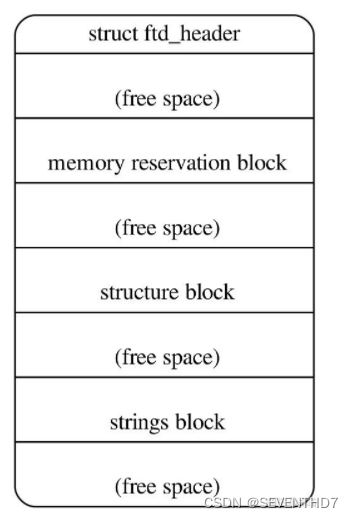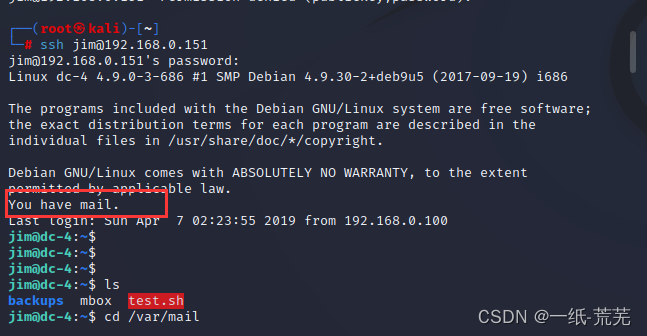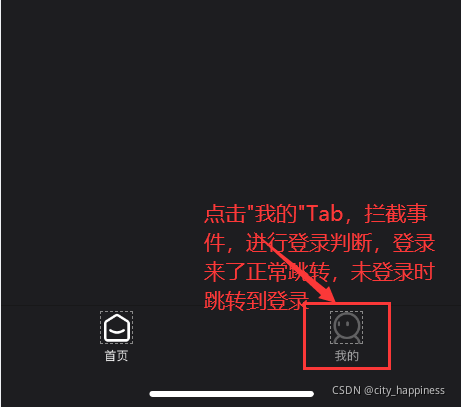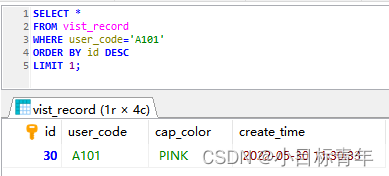当前位置:网站首页>设备树解析源码分析<devicetree>-1.基础结构
设备树解析源码分析<devicetree>-1.基础结构
2022-08-03 05:23:00 【SEVENTHD7】
- linux-v5.6
参考资料:
- devicetree-specification-v0.3.pdf
可从官网下载:https://www.devicetree.org/- Documentation/devicetree/
一、DTB格式
根据device tree的规格书的FLATTENED DEVICETREE (DTB) FORMAT章节描述,DTB的组成如下:

1.1 header 设备树头信息
首先是struct fdt_header,该结构体定义如下:
/* scripts/dtc/libfdt/fdt.h */
struct fdt_header {
fdt32_t magic; /* magic word FDT_MAGIC */
fdt32_t totalsize; /* total size of DT block */
fdt32_t off_dt_struct; /* offset to structure */
fdt32_t off_dt_strings; /* offset to strings */
fdt32_t off_mem_rsvmap; /* offset to memory reserve map */
fdt32_t version; /* format version */
fdt32_t last_comp_version; /* last compatible version *//* version 2 fields below */
fdt32_t boot_cpuid_phys; /* Which physical CPU id we're booting on */
/* version 3 fields below */
fdt32_t size_dt_strings; /* size of the strings block *//* version 17 fields below */
fdt32_t size_dt_struct; /* size of the structure block */
};
所有成员都是32-bit整型,并以大端模式存储;从头部可获知memory reservation block、structure block和strings block部分的起始地址和大小。
下面以树梅派4b的dtb文件为例,首先使用fdtdump工具对dtb文件进行dump:
fdtdump -sd bcm2711-rpi-4-b.dtb > dtb_dump
查看dtb_dump文件,header信息如下:
bcm2711-rpi-4-b.dtb: found fdt at offset 0
/dts-v1/;
// magic: 0xd00dfeed
// totalsize: 0xa721 (42785)
// off_dt_struct: 0x48
// off_dt_strings: 0x98dc
// off_mem_rsvmap: 0x28
// version: 17
// last_comp_version: 16
// boot_cpuid_phys: 0x0
// size_dt_strings: 0xe45
// size_dt_struct: 0x9894
查看对应的16进制数据:
00000000: d0 0d fe ed 00 00 a7 21 00 00 00 48 00 00 98 dc
00000010: 00 00 00 28 00 00 00 11 00 00 00 10 00 00 00 00
00000020: 00 00 0e 45 00 00 98 94发现的确是以大端模式存储。
1.2 memory reservation block
设备树预留内存区域,用于存放并保护一些重要的数据,与特定平台的实现相关,本文不详细讨论;其对应的数据结构如下:
struct fdt_reserve_entry {
fdt64_t address;
fdt64_t size;
};
成员为64-bit整型,记录预留内存区域的起始地址和大小。
1.3 structure block和strings block
struct fdt_node_header {
fdt32_t tag;
/* node名称,作为额外数据以'\0'结尾的字符串形式存储在structure block
* 32-bits对齐,不够的位用0x0补齐
*/
char name[0];
};struct fdt_property {
fdt32_t tag;
/* 表示property value的长度 */
fdt32_t len;
/* property的名称存放在string block区域,nameoff表示其在string block的偏移 */
fdt32_t nameoff;
/* property value值,作为额外数据以'\0'结尾的字符串形式存储structure block
* 32-bits对齐,不够的位用0x0补齐
*/
char data[0];
};
其中,tag有如下几种取值情况:
#define FDT_BEGIN_NODE 0x1 /* Start node: full name */
#define FDT_END_NODE 0x2 /* End node */
#define FDT_PROP 0x3 /* Property: name off,
size, content */
#define FDT_NOP 0x4 /* nop */
#define FDT_END 0x9
- FDT_BEGIN_NODE:标识一个node的开始
- FDT_END_NODE:标识一个node的结束
- FDT_PROP:标识node中property的开始
- FDT_NOP:所有的设备树解析程序都会忽略该令牌,一般用于覆盖树中的属性或者节点,以将其从书中删除。
- FDT_END:标识structure block区域的结束
下面取树梅派4b设备树中的一个节点进行说明:
/ {
[email protected] {
device_type = "memory";
reg = <0 0 0>;
};......
};
对应的dtb dump数据如下:
// 71f0: tag: 0x00000001 (FDT_BEGIN_NODE)
[email protected] {
// 7200: tag: 0x00000003 (FDT_PROP)
// 9d69: string: device_type
// 720c: value
device_type = "memory";
// 7214: tag: 0x00000003 (FDT_PROP)
// 9a45: string: reg
// 7220: value
reg = <0x00000000 0x00000000 0x00000000>;
// 722c: tag: 0x00000002 (FDT_END_NODE)
};
对应的16进制数据如下:
000071f0: 00 00 00 01 6d 65 6d 6f 72 79 40 30 00 00 00 00 [email protected]
00007200: 00 00 00 03 00 00 00 07 00 00 04 8d6d 65 6d 6f ............memo
00007210: 72 79 00 00 00 00 00 03 00 00 00 0c 00 00 01 69 ry.............i
00007220: 00 00 00 00 00 00 00 00 00 00 00 00 00 00 00 02 ................
- 00 00 00 01:FDT_BEGIN_NODE
- 6d 65 6d 6f 72 79 40 30 00:[email protected](含结尾的'\0'),后面的00 00 00为32-bits补齐
- 00 00 00 03:FDT_PROP
- 00 00 00 07:len,表示该属性值的长度为7(memory加最后的'\0',刚好7个字节)
- 00 00 04 8d:nameoff,表示该属性的名称在strings block的偏移为0x048d,从header可知strings block的起始地址为0x98dc,那么该名称的起始地址为0x9d69,查看该地址数据:
00009d60: 65 2d 6d 65 74 68 6f 64 00 64 65 76 69 63 65 5f e-method.device_
00009d70: 74 79 70 65 00 63 70 75 2d 72 65 6c 65 61 73 65 type.cpu-release
发现64 65 76 69 63 65 5f 74 79 70 65 00刚好是device_type(含结尾的'\0')。
- 6d 65 6d 6f 72 79 00:memory(含结尾的'\0'),后面的00为32-bits补齐
- 00 00 00 03:FDT_PROP
- 00 00 00 0c:len,该属性值长度为12 "reg = <0 0 0>;"
- 00 00 01 69:nameoff,该名称的起始地址为0x9a45(0x98dc+0x0169),查看该地址数据:
00009a40: 6e 67 65 73 00 72 65 67 00 69 6e 74 65 72 72 75 nges.reg.interru发现72 65 67 00刚好是reg(含结尾的'\0')。
- 00 00 00 00 00 00 00 00 00 00 00 00:reg值为整型,没有结尾的'\0'。
- 00 00 00 02:FDT_END_NODE
1.4 零长数组
零长数组一般用作结构体最后一个成员,用于访问该结构体对象之后的一段内存(一般为动态分配),来看GNU C官网的一个例子:
/* https://gcc.gnu.org/onlinedocs/gcc/Zero-Length.html */
struct line {
int length;
char contents[0];
};
struct line *thisline = (struct line *)
malloc (sizeof (struct line) + this_length);
thisline->length = this_length;contents只是一个标记,sizeof (struct line)的大小与sizeof(int)的大小是相同的;使用时往后多申请的this_length大小的内存,即可使用thisline->contents进行访问;
由于设备树node节点的名称和property value值的长度是不固定的,所以fdt_node_header和fdt_property结构体便使用了零长数组进行实现。
二、dtb数据解析
第一章节介绍了dtb文件的整体组成,包括header的组成,structure block区域是由tag、node name、property len、property nameoff和property value组成的,strings block是由各个property name组成的,本章节介绍linux内核是如何找到并获取这些内容的。
kernel启动的入口函数为stext,其中会将bootloader传来的dtb地址(物理地址,保存在x21寄存器中)赋值给__fdt_pointer变量:
ENTRY(stext)
--> __primary_switch
--> __primary_switched
--> str_l x21, __fdt_pointer, x5 // Save FDT pointer如此,此后执行的start_kernel便可知晓此时dtb文件在内存中的物理地址,从而对dtb文件进行映射,并进行数据解析。
2.1 tag
使用fdt_next_tag函数获取当前tag数值并查找下一个tag的偏移。
/* scripts/dtc/libfdt/fdt.c
* fdt: dtb文件虚拟地址
* startoffset: 当前tag的偏移
* nextoffset: 需要查找的下一个tag的偏移
*//*
off_dt_struct: dt_struct Offset
*/
#define fdt_off_dt_struct(fdt) (fdt_get_header(fdt, off_dt_struct))
/*
field: ftd_header_t.off_dt_struct
*/
#define fdt_get_header(fdt, field) \
(fdt32_to_cpu( ((const struct fdt_header *)(fdt))->field))
const void *fdt_offset_ptr(const void *fdt, int offset, unsigned int len)
{
unsigned absoffset = offset + fdt_off_dt_struct(fdt);
/**/
if ((absoffset < offset)
|| ((absoffset + len) < absoffset)
|| (absoffset + len) > fdt_totalsize(fdt))
return NULL;if (fdt_version(fdt) >= 0x11)
if (((offset + len) < offset)
|| ((offset + len) > fdt_size_dt_struct(fdt)))
return NULL;/*
(const char *)fdt + fdt_off_dt_struct(fdt) + offset;
*/
return _fdt_offset_ptr(fdt, offset);
}
uint32_t fdt_next_tag(const void *fdt, int startoffset, int *nextoffset)
{
int offset = startoffset;*nextoffset = -FDT_ERR_TRUNCATED;
/* (const char *)fdt + fdt_off_dt_struct(fdt) + offset
* 此处获取当前tag首地址:ftd + stucture block 偏移 +offset
*/
tagp = fdt_offset_ptr(fdt, offset, FDT_TAGSIZE); //FDT_TAGSIZE=32bits
if (!tagp)
return FDT_END; /* premature end */
/* fdt32_to_cpu(x) 获取大端模式的32bit数值
* --> (FDT_FORCE uint32_t)CPU_TO_FDT32(x)
* --> ((EXTRACT_BYTE(x, 0) << 24) | (EXTRACT_BYTE(x, 1) << 16) | \
* (EXTRACT_BYTE(x, 2) << 8) | EXTRACT_BYTE(x, 3))
* 即tagp[0]<<24 + tagp[1]<<16 + tagp[2]<<8 + tagp[3]
* 即获得了32bits大小的tag数值
*/
tag = fdt32_to_cpu(*tagp);
/* 跳过tag */
offset += FDT_TAGSIZE;
*nextoffset = -FDT_ERR_BADSTRUCTURE;
switch (tag) {
case FDT_BEGIN_NODE:
/* 如果是FDT_BEGIN_NODE,则还需要跳过node name */
do {
p = fdt_offset_ptr(fdt, offset++, 1);//每次移动一个字节
} while (p && (*p != '\0')); //查找当前节点 value值结束位置
break;case FDT_PROP:
/* 如果是FDT_PROP,则还需要跳过len、nameoff以及property value的长度 */
lenp = fdt_offset_ptr(fdt, offset, sizeof(*lenp));
offset += sizeof(struct fdt_property) - FDT_TAGSIZE
+ fdt32_to_cpu(*lenp);
break;case FDT_END:
case FDT_END_NODE:
case FDT_NOP:
break;default:
return FDT_END;
}
/* 检查当前offset是否合法 :参数1-此次查找最开始的位置,参数2-查找的字符的长度*/
if ( !fdt_offset_ptr(fdt, startoffset, offset - startoffset) )
return FDT_END; /* premature end */
/* device tree有32-bits对齐要求,对齐后的nextoffset即为下一个tag的偏移
* (((offset) + (FDT_TAGSIZE) - 1) & ~((FDT_TAGSIZE) - 1))
* -------------- --------------
* 保证进位 清零多余的位
*/
*nextoffset = FDT_TAGALIGN(offset);
/* 返回当前tag数值 */
return tag;
}
2.2 node
使用fdt_next_node函数查找下一个node:
int fdt_next_node(const void *fdt, int offset, int *depth)
{
int nextoffset = 0;
uint32_t tag;
/* of_scan_flat_dt获取首个node节点时传入的offset为-1,此时不进行
* fdt_check_node_offset_检查
*/
if (offset >= 0)
/* fdt_check_node_offset_主要进行一些检查:
* 1、offset是否>=0,该句在此情景下其实是重复判断
* 2、offset是否32-bits对齐
* 3、当前tag是否为FDT_BEGIN_NODE
* 4、检查通过,将offset形参数值返回
*/
if ((nextoffset = fdt_check_node_offset_(fdt, offset)) < 0)
return nextoffset;do {
offset = nextoffset;
/* 获取当前tag值,以及下一个tag的偏移(nextoffset) */
tag = fdt_next_tag(fdt, offset, &nextoffset);switch (tag) {
case FDT_PROP:
case FDT_NOP:
break;case FDT_BEGIN_NODE:
if (depth)
(*depth)++;
break;case FDT_END_NODE:
/* FDT_END_NODE后面要么是FDT_BEGIN_NODE,
* 要么是FDT_END,FDT_END时直接返回((--(*depth)为-1)
*/
if (depth && ((--(*depth)) < 0))
return nextoffset;
break;case FDT_END:
/* tag为FDT_END时,offset会超出structure block区域,
* nextoffset为-FDT_ERR_BADSTRUCTURE,即-11
*/
if ((nextoffset >= 0)
|| ((nextoffset == -FDT_ERR_TRUNCATED) && !depth))
return -FDT_ERR_NOTFOUND;
else
return nextoffset;
}
} while (tag != FDT_BEGIN_NODE);/* 返回FDT_BEGIN_NODE或者FDT_END,后续可以以depth值进行区分 */
return offset;
}
有了node的起始offset,则可以计算对应的虚拟地址,强制转换为fdt_node_header结构体即可获取node name,如fdt_get_name函数:
const char *fdt_get_name(const void *fdt, int nodeoffset, int *len)
{
const struct fdt_node_header *nh = fdt_offset_ptr_(fdt, nodeoffset);
nameptr = nh->name;
/* 因name以'\0'结尾,故可直接使用strlen计算长度 */
*len = strlen(nameptr);
}关于node name:
- 对于设备树version0~3:node name为以'/'开头,以'\0'结尾的全路径名
- 对于设备树version16及以上:node name仅仅是以'\0'结尾的node本身的名字(根节点的name为'\0')
2.3 property
使用nextprop_函数查找node中的下一个property。
static int nextprop_(const void *fdt, int offset)
{
uint32_t tag;
int nextoffset;
do {
tag = fdt_next_tag(fdt, offset, &nextoffset);
switch (tag) {
case FDT_END:
if (nextoffset >= 0)
return -FDT_ERR_BADSTRUCTURE;
else
return nextoffset;
case FDT_PROP:
return offset;
}
offset = nextoffset;
} while (tag == FDT_NOP);
return -FDT_ERR_NOTFOUND;
}fdt_first_property_offset与fdt_next_property_offset函数均是调用nextprop_获取node中的第一个property和下一个property;有了property起始offset,则可像node操作一样,获取fdt_property结构体的其他成员(除了property name)。
property name可以通过fdt_get_string函数进行获取:
const char *fdt_get_string(const void *fdt, int stroffset, int *lenp)
{
int32_t totalsize = fdt_ro_probe_(fdt);
/* stroffset: nameoff
* absoffset: property name字符串在dtb中的绝对偏移
*/
uint32_t absoffset = stroffset + fdt_off_dt_strings(fdt);
size_t len;
const char *s, *n;
len = totalsize - absoffset;
if (fdt_magic(fdt) == FDT_MAGIC) {
if (stroffset < 0)
goto fail;
if (fdt_version(fdt) >= 17) {
if (stroffset >= fdt_size_dt_strings(fdt))
goto fail;
if ((fdt_size_dt_strings(fdt) - stroffset) < len)
len = fdt_size_dt_strings(fdt) - stroffset;
}
}
/* 获取property name的虚拟地址 */
s = (const char *)fdt + absoffset;
/* 获取从s第一次出现'\0'字符的地址 */
n = memchr(s, '\0', len);
if (!n) {
/* missing terminating NULL */
err = -FDT_ERR_TRUNCATED;
goto fail;
}
if (lenp)
*lenp = n - s;
return s;
}三、kernel处理流程
知晓了dtb各种信息的获取方法后,来看kernel对设备树的具体处理流程。
3.1 重要数据结构
kernel使用device_node和property结构体来记录node和node下的属性信息。
/* include/linux/of.h */
struct device_node {
/* node名称,取"/"与"@"之间的字符 */
const char *name;
phandle phandle;
/* node路径全称 */
const char *full_name;
/* Firmware device相关 */
struct fwnode_handle fwnode;
/* node下的第一个property */
struct property *properties;
struct property *deadprops; /* removed properties */
struct device_node *parent;
struct device_node *child;
struct device_node *sibling;
#if defined(CONFIG_OF_KOBJ)
struct kobject kobj;
#endif
unsigned long _flags;
void *data;
#if defined(CONFIG_SPARC)
unsigned int unique_id;
struct of_irq_controller *irq_trans;
#endif
};
struct property {
char *name;
int length;
void *value;
/* 同一个node下的property会形成一个单链表 */
struct property *next;
#if defined(CONFIG_OF_DYNAMIC) || defined(CONFIG_SPARC)
unsigned long _flags;
#endif
#if defined(CONFIG_OF_PROMTREE)
unsigned int unique_id;
#endif
#if defined(CONFIG_OF_KOBJ)
struct bin_attribute attr;
#endif
};3.2 解析流程
大致调用路径如下:
start_kernel
--> setup_arch(&command_line);
--> setup_machine_fdt(__fdt_pointer);
/* acpi与dt有着类似的功能,但主要用于提高电源效率 */
if (acpi_disabled)
unflatten_device_tree();下面主要分析setup_machine_fdt和unflatten_device_tree这两个函数。
3.2.1 setup_machine_fdt
setup_machine_fdt函数用于提前解析一些系统启动必要的属性。
static void __init setup_machine_fdt(phys_addr_t dt_phys)
{
int size;
/* 为了支持后续early_init_dt_scan对fdt的修改,此处以可读写方式对设备树物理地址
* 进行映射,详见comiit e112b032a72c7(arm64: map FDT as RW for
* early_init_dt_scan())
* 由于此时内存管理子系统还没初始化完成,故使用fixmap region,相关commit为
* 61bd93ce801bb(arm64: use fixmap region for permanent FDT mapping)
*/
void *dt_virt = fixmap_remap_fdt(dt_phys, &size, PAGE_KERNEL);
const char *name;if (dt_virt)
memblock_reserve(dt_phys, size);if (!dt_virt || !early_init_dt_scan(dt_virt)) {
/* 无效的dtb,打印Error并进入cpu_relax */
}/* Early fixups are done, map the FDT as read-only now
* 重新以只读方式进行映射
*/
fixmap_remap_fdt(dt_phys, &size, PAGE_KERNEL_RO);
}
early_init_dt_scan函数实现如下:
bool __init early_init_dt_scan(void *params)
{
/* 1. 检查device tree有效性
* 2. 将全局变量initial_boot_params赋值为dt_virt
*/
status = early_init_dt_verify(params);
/* 做一些预先的扫描工作 */
early_init_dt_scan_nodes();
}early_init_dt_scan_node函数:
void __init early_init_dt_scan_nodes(void)
{
int rc = 0;/* of_scan_flat_dt函数主要作用为从root开始遍历所有node,并回调传入的函数;
* 输入回调函数的形参:
* node: 当前扫描节点
* uname: 节点名词
* depth: node嵌套深度
* data: 私有数据,即of_scan_flat_dt的第二个形参
*//* 从/chosen或者/[email protected]节点获取以下属性值:
* linux,initrd-start、linux,initrd-end
* bootargs,该属性为bootloader传入的命令行参数,赋值给boot_command_line
*/
rc = of_scan_flat_dt(early_init_dt_scan_chosen, boot_command_line);
if (!rc)
pr_warn("No chosen node found, continuing without\n");/* 获取"/"节点下的{size,address}-cells信息(根节点的depth为0),
* 将名称为#size-cells和#address-cells的属性的虚拟地址值赋值给
* 全局变量dt_root_size_cells和dt_root_addr_cells
*/
of_scan_flat_dt(early_init_dt_scan_root, NULL);/* 扫描device_type为"memory"的node,并将"linux,usable-memory"
* 或者"reg"属性的值解析成各个base和size,最后添加到内存管理系统:
* early_init_dt_scan_memory
* --> early_init_dt_add_memory_arch
* --> memblock_add(base, size)
*/
of_scan_flat_dt(early_init_dt_scan_memory, NULL);
}
上述回调函数中涉及到的比较重要的函数有of_get_flat_dt_prop函数:
/* 在node下寻找属性名称与name相同的属性,并返回:
* 1、找到的property的虚拟地址
* 2、找到的property value的长度
*/
const void *__init of_get_flat_dt_prop(unsigned long node, const char *name,
int *size)
{
return fdt_getprop(initial_boot_params, node, name, size);
}3.2.2 unflatten_device_tree
unflatten_device_tree开始全面扫描dtb文件,并将相关信息填充到device_node和property结构体,创建一颗device_nodes树。
oid __init unflatten_device_tree(void)
{
/* initial_boot_params: 在early_init_dt_scan-->early_init_dt_verify中赋值为
* 设备树首地址(虚拟地址)
* of_root: 经过该函数处理后会指向根节点
* early_init_dt_alloc_memory_arch: 该函数使用的内存分配器
*/
__unflatten_device_tree(initial_boot_params, NULL, &of_root,
early_init_dt_alloc_memory_arch, false);
/* Get pointer to "/chosen" and "/aliases" nodes for use everywhere */
of_alias_scan(early_init_dt_alloc_memory_arch);
unittest_unflatten_overlay_base();
}主要实现在__unflatten_device_tree函数中:
void *__unflatten_device_tree(const void *blob,
struct device_node *dad,
struct device_node **mynodes,
void *(*dt_alloc)(u64 size, u64 align),
bool detached)
{
/* 读取dtb头部信息,并进行合法检查
* 其中有一项是dtb的totalsize不能大于INT_MAX,即不能大于2GB
*/
if (fdt_check_header(blob)) {
pr_err("Invalid device tree blob header\n");
return NULL;
}
/* 第一次调用unflatten_dt_nodes,仅创建device_node和property结构体,并计算
* 总共需要的内存大小
*/
size = unflatten_dt_nodes(blob, NULL, dad, NULL);
/* 进行4字节对齐 */
size = ALIGN(size, 4);
/* Allocate memory for the expanded device tree */
mem = dt_alloc(size + 4, __alignof__(struct device_node));
memset(mem, 0, size);
/* 设置魔数 */
*(__be32 *)(mem + size) = cpu_to_be32(0xdeadbeef);
/* 第二次调用,进行实际的填充工作*/
unflatten_dt_nodes(blob, mem, dad, mynodes);
if (be32_to_cpup(mem + size) != 0xdeadbeef)
pr_warn("End of tree marker overwritten: %08x\n",
be32_to_cpup(mem + size));
return mem;
}其中对unflatten_dt_nodes函数进行了两次调用,在commit dfbd4c6eff35f(drivers/of: Split unflatten_dt_node())中,将unflatten_dt_node分成了populate_properties()、populate_node()和unflatten_dt_node()。
- populate_properties():被populate_node调用,为当前node下所有的property创建struct property结构体,并进行信息填充
- populate_node():被unflatten_dt_node()调用,为当前offset处的node创建struct device_node结构体、struct property结构体,并进行信息填充
- unflatten_dt_node():解析并填充dtb中的所有节点、属性信息。
首先是populate_properties()函数:
static void populate_properties(const void *blob,
int offset,
void **mem,
struct device_node *np,
const char *nodename,
bool dryrun)
{
struct property *pp, **pprev = NULL;
int cur;
bool has_name = false;
/* np下所有的property会形成一个单链表,
* np->properties指向其中第一个property
*/
pprev = &np->properties;
/* 查找np下所有的property,最终都会调用到2.3小节的nextprop_()函数
* 返回的cur为找到的property的offset值
*/
for (cur = fdt_first_property_offset(blob, offset);
cur >= 0;
cur = fdt_next_property_offset(blob, cur)) {
const __be32 *val;
const char *pname;
u32 sz;
/* 通过offset获取property的value、value size以及name值 */
val = fdt_getprop_by_offset(blob, cur, &pname, &sz);
/* 此处不是向内存管理器申请内存,而是为property划分内存区域
* 函数实现:
* *mem = PTR_ALIGN(*mem, align);
* res = *mem;
* *mem += size; //mem指向该property后面的地址
* return res; //返回对齐后的地址
*/
pp = unflatten_dt_alloc(mem, sizeof(struct property),
__alignof__(struct property));
/* dryrun有两种情况:
* 1:传入的mem为NULL,即第一次调用unflatten_dt_nodes的情况
* 0: 传入的mem指向一块已分配的内存,即第二次调用情况
* 第一次调用只是为了获取size,不做具体填充操作
*/
if (dryrun)
continue;
/* We accept flattened tree phandles either in
* ePAPR-style "phandle" properties, or the
* legacy "linux,phandle" properties. If both
* appear and have different values, things
* will get weird. Don't do that.
*/
if (!strcmp(pname, "phandle") ||
!strcmp(pname, "linux,phandle")) {
if (!np->phandle)
np->phandle = be32_to_cpup(val);
}
/* And we process the "ibm,phandle" property
* used in pSeries dynamic device tree
* stuff
*/
if (!strcmp(pname, "ibm,phandle"))
np->phandle = be32_to_cpup(val);
pp->name = (char *)pname;
pp->length = sz;
pp->value = (__be32 *)val;
*pprev = pp;
/* 指向property链表的下一个成员 */
pprev = &pp->next;
}
/* 设备树的16及以上版本没有name为"name"的property,此处重新进行创建
*/
if (!has_name) {
const char *p = nodename, *ps = p, *pa = NULL;
int len;
while (*p) {
if ((*p) == '@')
pa = p;
/* 注:设备树16及以上版本的nodename中不含'/'字符 */
else if ((*p) == '/')
ps = p + 1;
p++;
}
if (pa < ps)
pa = p;
len = (pa - ps) + 1;
/* 在struct property后面多划分了len大小的内存区域,用于存放pp->value,
* 也就是这里的"nodename",及node的名称(取'/'和'@'之间的字符)
*/
pp = unflatten_dt_alloc(mem, sizeof(struct property) + len,
__alignof__(struct property));
if (!dryrun) {
pp->name = "name";
pp->length = len;
pp->value = pp + 1;
*pprev = pp;
pprev = &pp->next;
memcpy(pp->value, ps, len - 1);
((char *)pp->value)[len - 1] = 0;
pr_debug("fixed up name for %s -> %s\n",
nodename, (char *)pp->value);
}
}
if (!dryrun)
*pprev = NULL;
}然后是populate_node()函数:
static bool populate_node(const void *blob,
int offset,
void **mem,
struct device_node *dad,
struct device_node **pnp,
bool dryrun)
{
struct device_node *np;
const char *pathp;
unsigned int l, allocl;
/* 获取offset处的node的name和name字符串的长度(不含结尾的'\0') */
pathp = fdt_get_name(blob, offset, &l);
if (!pathp) {
*pnp = NULL;
return false;
}
/* 将结尾的'\0'长度加上 */
allocl = ++l;
/* np为存放当前node数据的首地址
* 在struct device_node大小后面多划分allocl大小的内存,用于存放np->full_name
*/
np = unflatten_dt_alloc(mem, sizeof(struct device_node) + allocl,
__alignof__(struct device_node));
if (!dryrun) {
char *fn;
of_node_init(np);
np->full_name = fn = ((char *)np) + sizeof(*np);
/* 将name字符串的值拷贝到划分的内存处 */
memcpy(fn, pathp, l);
/* 如果当前节点有父节点 */
if (dad != NULL) {
np->parent = dad;
np->sibling = dad->child;
dad->child = np;
}
}
/* 分配struct property结构体,并进行填充(dryrun == 0时) */
populate_properties(blob, offset, mem, np, pathp, dryrun);
if (!dryrun) {
/* 获取当前node下name属性,并将value值赋值给np->name('/'和'@'之间的字符)
* 注:version 16及以上的node name不是全路径名,只是name本身,所以不会含有'/'
*/
np->name = of_get_property(np, "name", NULL);
if (!np->name)
np->name = "<NULL>";
}
/* 将填充好的np赋值到pnp指向的地址,如果是根节点情况(offset == 0),
* 则nps[depth+1]指向根节点('/')
*/
*pnp = np;
return true;
}最后是unflatten_dt_nodes()函数:
static int unflatten_dt_nodes(const void *blob,
void *mem,
struct device_node *dad,
struct device_node **nodepp)
{
struct device_node *root;
int offset = 0, depth = 0, initial_depth = 0;
#define FDT_MAX_DEPTH 64
/* 题外话:
* nps是一个数组,数组成员为struct device_node *类型的指针
* 如果写为struct device_node (*nps)[FDT_MAX_DEPTH];
* 那么nps是一个指针,指向由struct device_node类型数据组成的数组
*/
struct device_node *nps[FDT_MAX_DEPTH];
void *base = mem;
bool dryrun = !base;
/* unflatten_device_tree()函数中传入的nodepp为&of_root(全局变量) */
if (nodepp)
*nodepp = NULL;
/* 如果有父节点,需要设置depth为1,
* unflatten_device_tree()函数中传入的dad为NULL
*/
if (dad)
depth = initial_depth = 1;
root = dad;
nps[depth] = dad;
for (offset = 0;
offset >= 0 && depth >= initial_depth;
offset = fdt_next_node(blob, offset, &depth)) {
/* 嵌套深度大于64的node将不会被处理 */
if (WARN_ON_ONCE(depth >= FDT_MAX_DEPTH))
continue;
/* 没有定义CONFIG_OF_KOBJ,并且当前noden节点的status属性值为disable,
* 则跳过对该节点的处理
* 注:CONFIG_OF_KOBJ在commit b56b5528f5b3c(of: make kobject and
* bin_attribute support configurable)加入,当sysfs和OF_DYNAMIC
* 使能时配置该选项;
*/
if (!IS_ENABLED(CONFIG_OF_KOBJ) &&
!of_fdt_device_is_available(blob, offset))
continue;
/* 分配struct device_node结构体,并进行填充(dryrun == 0时) */
if (!populate_node(blob, offset, &mem, nps[depth],
&nps[depth+1], dryrun))
/* 如果获取到的node name为NULL,则提前返回size */
return mem - base;
if (!dryrun && nodepp && !*nodepp)
/* of_root指向根节点 */
*nodepp = nps[depth+1];
if (!dryrun && !root)
/* root指向根节点 */
root = nps[depth+1];
}
/*
* Reverse the child list. Some drivers assumes node order matches .dts
* node order
*/
if (!dryrun)
reverse_nodes(root);
/* 将所有struct device_node,struct property,包含紧跟的一些name的size的
* 的总和进行返回(unflatten_dt_alloc()函数划分的区域大小)
*/
return mem - base;
}从注释看,reverse_nodes()函数会对设备树的child链表进行反转,下面以一个简单的设备树为例:
/ {
leds {
act {
gpios = <&gpio 42 GPIO_ACTIVE_HIGH>;
};
pwr {
label = "PWR";
gpios = <&expgpio 2 GPIO_ACTIVE_LOW>;
default-state = "keep";
linux,default-trigger = "default-on";
};
};
wifi_pwrseq: wifi-pwrseq {
compatible = "mmc-pwrseq-simple";
reset-gpios = <&expgpio 1 GPIO_ACTIVE_LOW>;
};
};该设备树经过populate_node()解析处理后,结构体关系如下:
- /节点:
- parent:NULL
- sibling:NULL
- child:wifi_pwrseq
- led节点:
- parent:/
- sibling:NULL
- child:pwr
- act节点:
- parent:led
- sibling:NULL
- child:NULL
- pwr节点:
- parent:led
- sibling:act
- child:NULL
- wifi_pwrseq节点:
- parent:/
- sibling:led
- child:NULL可以发现该树形结构中的child和sibling与实际dts中的顺序的确是相反的。
边栏推荐
- new / malloc / delete / free之间的区别
- arm64麒麟安装paddlehub(国产化)注意事项
- 自监督论文阅读笔记 SimCLRV2 Big Self-Supervised Models are Strong Semi-Supervised Learners
- 自监督论文阅读笔记 Ship Detection in Sentinel 2 Multi-Spectral Images with Self-Supervised Learning
- mysql 客户端SSL错误2026 (HY000)
- 中国生活垃圾处理行业十四五规划与投融资模式分析报告2022~2028年
- 自监督论文阅读笔记 Multi-motion and Appearance Self-Supervised Moving Object Detection
- 网络间通信
- Browser multi-threaded off-screen rendering, compression and packaging scheme
- 嵌入式实验二注意点
猜你喜欢

【DC-4 Range Penetration】

MySQL 安装报错的解决方法

边缘辅助无人机网络的分层联邦学习

自监督论文阅读笔记 Self-Supervised Visual Representation Learning with Semantic Grouping

嵌入式实验二

优雅的拦截TabLayout的点击事件

自监督论文阅读笔记 DenseCL:Dense Contrastive Learning for Self-Supervised Visual Pre-Training

MySql 怎么查出符合条件的最新的数据行?
![[frp intranet penetration]](/img/5c/ca18bef3e5fec279c19825ee93b34b.png)
[frp intranet penetration]

嵌入式实验二注意点
随机推荐
Router-view
arm64麒麟安装paddlehub(国产化)注意事项
漫谈Map Reduce 参数优化
自监督论文阅读笔记 DenseCL:Dense Contrastive Learning for Self-Supervised Visual Pre-Training
Sqli-labs-master shooting range 1-23 customs clearance detailed tutorial (basic)
中国生活服务O2O行业发展现状与市场规模预测报告2022~2028年
嵌入式实验二注意点
取某一区间中素数的个数--洛谷P1865 A % B Problem
【IDEA】字体修改-护眼主题-文件注释头设置
【源码解读】你买的NFT到底是什么?
【DC-4 Range Penetration】
c#,.net 下载文件 设置断点
mysql 客户端SSL错误2026 (HY000)
优雅的拦截TabLayout的点击事件
自监督论文阅读笔记 S3Net:Self-supervised Self-ensembling Network for Semi-supervised RGB-D Salient Object Det
[XSS, file upload, file inclusion]
Qlik Sense 赋值详解(Set、Let)
Ansible installation and deployment detailed process, basic operation of configuration inventory
Execute the mysql script file in the docker mysql container and solve the garbled characters
Invalid signature file digest for Manifest main attributes解决方法